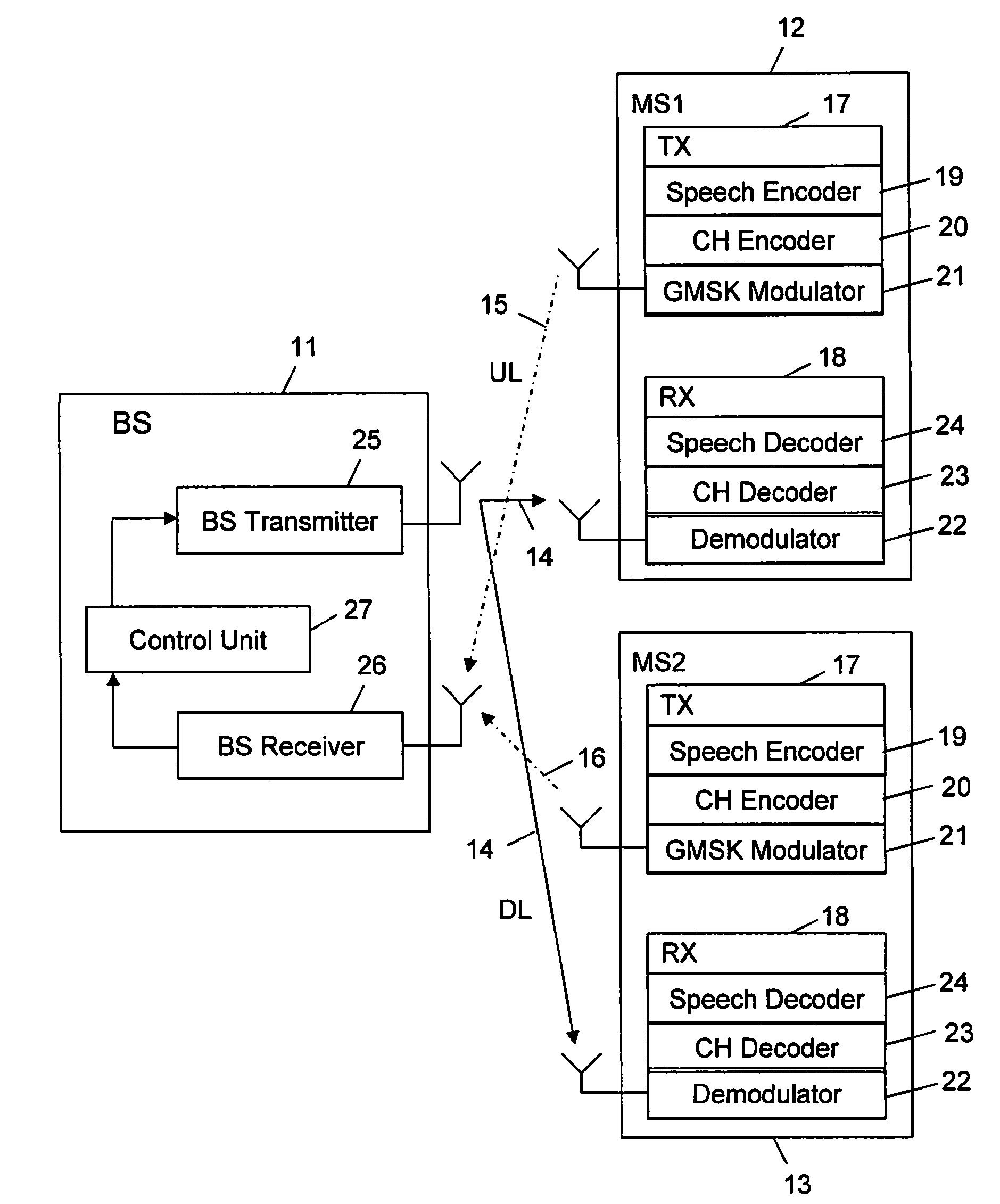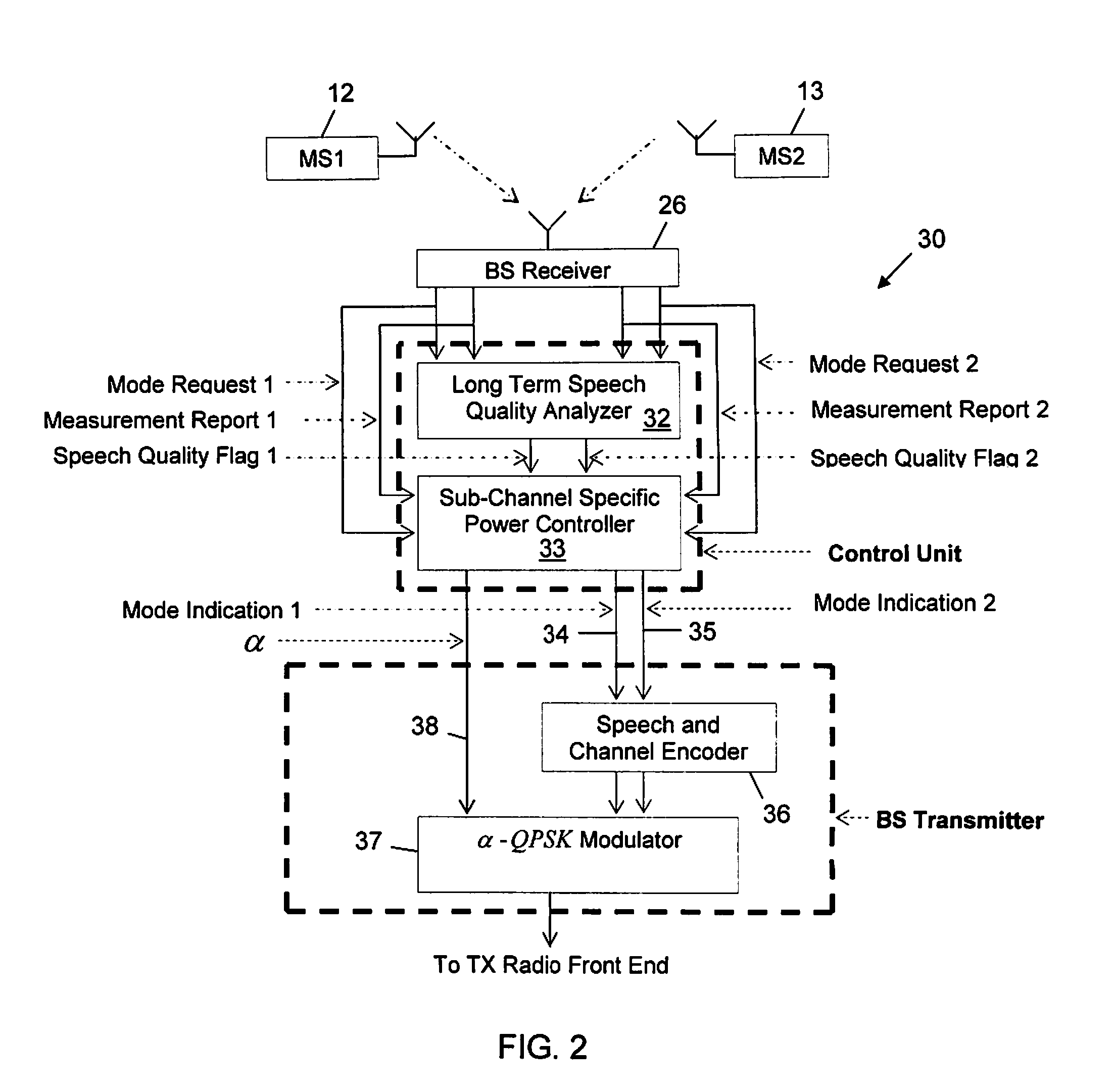Integrated power control and link adaptation
a power control and link technology, applied in the field of integrated power control and link adaptation, can solve the problems of insufficient speed of inability to adapt to the speed of mobile stations sending rxqual measurement reports to the base station, and inability to accurately control sub-channel specific power control at the rate of 480 ms, so as to maximize the speech quality of two users, increase the accuracy of vamos sub-channel power control, and ensure the effect of speech quality
- Summary
- Abstract
- Description
- Claims
- Application Information
AI Technical Summary
Benefits of technology
Problems solved by technology
Method used
Image
Examples
Embodiment Construction
[0021]Due to the different and varying radio conditions of the two co-TCH users (i.e. path losses, fading and interference levels) in VAMOS operation, it is critical for the base station to control the Sub-Channel Power Imbalance Ratio (SCPIR) accurately to maintain the voice quality of the two users. SCPIR is defined as:
SCPIR=10 log10(P1 / P2)
where P1 and P2 are the allocated powers to the two users and P1+P2=P where P is the total transmit power allocated to the two co-TCH users.
[0022]Several alternative downlink modulation techniques have been proposed for VAMOS in 3GPP TR 45.914, “Circuit Switched Voice Capacity Evolution for GSM / EDGE Radio Access Network,” v.1.0.2 (2009.01), including Orthogonal Sub-Channel (OSC) and α-QPSK. With OSC, the SCPIR can be changed by choosing different subsets of the existing 8PSK constellation used for EDGE. With α-QPSK, the SCPIR can be continuously changed by adjusting the α value. The modulation symbols are related to α as follows:
α12+j2-α212,α12-...
PUM
 Login to View More
Login to View More Abstract
Description
Claims
Application Information
 Login to View More
Login to View More - R&D
- Intellectual Property
- Life Sciences
- Materials
- Tech Scout
- Unparalleled Data Quality
- Higher Quality Content
- 60% Fewer Hallucinations
Browse by: Latest US Patents, China's latest patents, Technical Efficacy Thesaurus, Application Domain, Technology Topic, Popular Technical Reports.
© 2025 PatSnap. All rights reserved.Legal|Privacy policy|Modern Slavery Act Transparency Statement|Sitemap|About US| Contact US: help@patsnap.com



